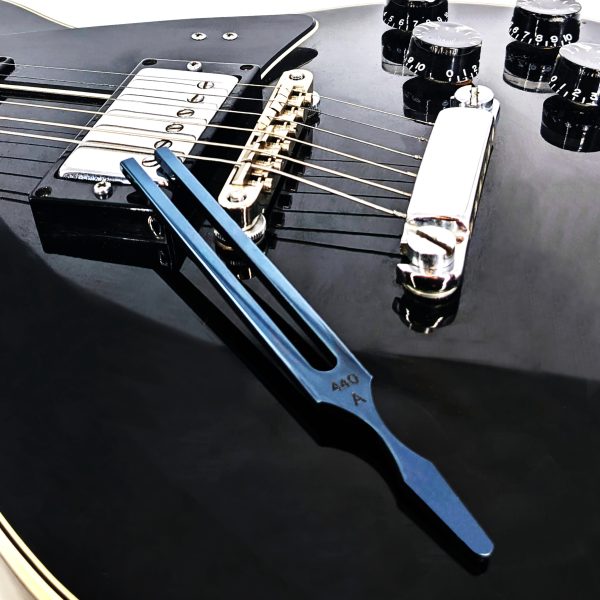The Tuning fork
What is a tuning fork?
Fundamentally, a tuning fork is a two-pronged fork made from steel or aluminium that when struck, creates vibration energy, which in turn creates a sound. This sound can be set to a specific pitch, also known as a frequency, this is measured in Hertz (Hz).
The frequency of a tuning fork is created from its size, shape and mass. Generally, the longer the prongs, the lower the pitch will be, this is because the prongs take longer to vibrate back and forth, therefore, generating lower tones – the opposite effect happens when the prongs are shorter.

"Manufactured in Sheffield, England since 1841"
How to use a tuning fork
A tuning fork is very simple to use. To create the pitch simply hold the handle of the fork between your finger and thumb, then strike the side of either prong against any firm, non-metallic surface, such as a Ragg Rubber Block. The fork should then be withdrawn from the striking surface immediately, and the prolonged sound of the note will be easily heard when held at the side of the ear.
Tuning an instrument is simple with a tuning fork. If we use the guitar as an example. Strike your John Walker tuning fork, then place the bottom of the fork on the guitar to resonate the sound. Once the tuning fork is resonating the sound, play the note matching the pitch on the tuning fork (E.g. if the fork is A 440Hz, play an A on the guitar) and adjust the guitar to the sound of the fork.

Tuning fork terminology
Weights
Weights are used to lower a tuning forks frequency and reduce the length of the prongs; If prongs are too long they can clatter. If a fork has weights, it is referred to as Weighted, if it doesn’t have weights, it is called Unweighted.
Frequency
The laser marking or stamped writing on a tuning fork is the frequency the fork rings at. This is measured in Hertz (Hz). There may also be a letter next to the frequency, this is the note of the fork.
Boot
The base of a tuning fork can sometimes have a boot. This is an additional attachment sometimes referred to as a foot that is put on a fork so when used on the body for vibrations, it is more comfortable for the user. The fork shown is without a boot. The base is the part of the tuning fork that is placed on the body when being used for vibrations.

This fork would be described as an
Weighted Aluminium C 128Hz Tuning Fork
Prongs
The prongs are the part of the tuning fork that generates the sound. The prongs oscillate (move back and forth), creating a tone. The prongs are sometimes called the legs. The longer the legs generally means the lower the frequency and the shorter the legs generally the higher the frequency. The width and mass of the legs can also be used to change the frequency.
Handle
The handle is the part of the tuning fork you hold when you activate it. If you hold the prongs, this will stop the vibration of the fork. The vibrations flow through the fork into the handle then into the base.

History of the tuning Fork
The invention of the tuning fork has been credited to John Shore, an English trumpeter, who made the discovery over 300 years ago in 1711. Shore’s original fork gave the pitch C at 512 vibrations per second (the equivalent to A422.5Hz). Shore’s invention was designed to tune musical instruments, however, to this day, tuning forks have vast applications such as in the fields of medicine, science and sound therapy.
The tuning fork was an innovative discovery, as the fork kept a consistent pitch and wasn’t affected by temperature and humidity as much as other tuning devices of the day. Despite being designed for musical purposes, the tuning fork was soon to be appreciated in the field of science and medicine, with famous physicians using the fork to perform tests on patients such as the Rinnie Test, which was used to test hearing. The tuning fork would continue to grow in popularity around the world with more and more uses getting discovered along the way.
Ragg Tuning Forks
Uniplex (UK) Ltd
11 Furnace Hill
Sheffield
South Yorkshire
S3 7AF
Contact Us
info@raggtuningforks.co.uk

